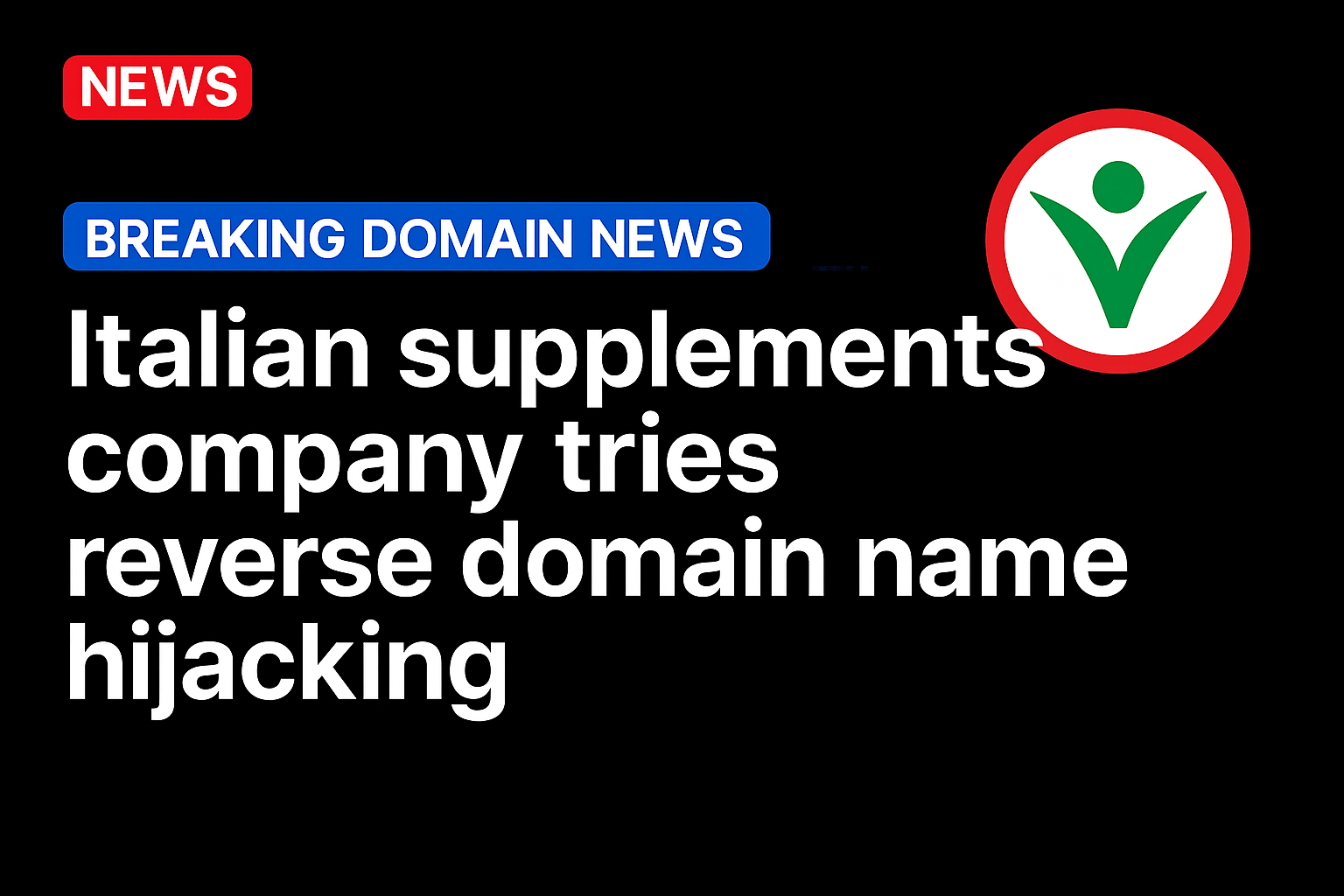
Company didn’t exist when domain was registered.
An Italian nutritional supplements company has been found guilty (pdf) of reverse domain name hijacking.
SNEP S.p.A., which uses the domain name snep.it, filed a cybersquatting complaint against snep.com.
A domain investor registered snep.com in 2000 and still owns the domain name.
Based on the record the Complainant submitted, it did not exist in 2000. This made the dispute dead on arrival, and the panel found the domain was not registered and used in bad faith to target the then-non-existent Complainant.
The three-person World Intellectual Property Organization panel noted that, even if the Complainant did have trademark rights that predated the registration, there are many uses for a four-letter domain like this.
Furthermore, the panel ruled that the case was filed in bad faith:
The Complaint included information showing that the disputed domain name was first registered in 2000 and provided no explanation as to how in these circumstances the Respondent could have registered the disputed domain name with the Complainant in mind. The Complainant was clearly aware that the registration date is an issue, as it requested from the Center information on the registration date for the current owner after the filing of the Complaint, with the stated purpose to amend the Complaint. Although no information was revealed by the Registrar to point to a different registrant and therefore a newer registration date, the Complainant failed to amend the Complaint, or withdraw it.
The Complainant’s only ground for bad faith was that the Respondent offered the disputed domain name for sale for a large amount of money, and that the disputed domain name is listed for sale. The Complaint appears to rely on paragraphs 4(b)(i) and (ii) of the Policy. Under paragraph 4(b)(i) of the Policy, it would be evidence of registration and use in bad faith if there are circumstances indicating that the Respondent registered the disputed domain name primarily for the purpose of selling it to the Complainant or a competitor of the Complainant for a large profit. As the Complainant and its trademarks did not exist when the Respondent registered the disputed domain name, this could not have been the Respondent’s primary intention at the time the Respondent registered the disputed domain name. The Complainant in this case is legally represented and the Panel considers that the Complainant knew or ought to have known that the Complaint had no reasonable prospect of success.
The Complainant should have appreciated that it would not be able to prevail on the issue of bad faith under of the Policy, and should never have filed the Complaint.
Source: https://domainnamewire.com/




